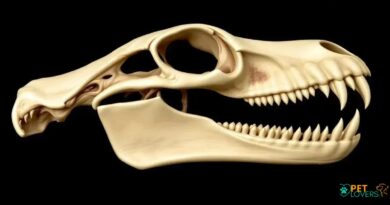What is canine agility
What is Canine Agility?
Canine agility is a dog sport that emphasizes speed, precision, and teamwork between the handler and the dog. In this exciting competition, dogs navigate through a timed obstacle course, which includes jumps, tunnels, weave poles, and various other challenges. The primary goal is to complete the course in the shortest time possible while adhering to the rules and avoiding penalties for mistakes. This sport showcases the incredible bond between dogs and their handlers, highlighting their training, communication, and mutual trust.
Amazing Deals on Dog Products!
Shop now for incredible deals on dog products at Amazon.com.
LEARN MORE
The History of Canine Agility
The origins of canine agility can be traced back to the late 1970s in the United Kingdom, where it was initially conceived as a demonstration event at a dog show. The concept quickly gained popularity, leading to the establishment of formal competitions and organizations dedicated to the sport. Over the years, canine agility has evolved, incorporating various styles and techniques, and has now become a global phenomenon, with competitions held in numerous countries and a diverse range of breeds participating.
Agility Equipment and Obstacles
Canine agility courses are designed with a variety of obstacles that test a dog’s physical abilities and mental acuity. Common equipment includes jumps, tunnels, A-frames, seesaws, and weave poles. Each obstacle presents unique challenges, requiring dogs to demonstrate agility, speed, and focus. Handlers play a crucial role in guiding their dogs through the course, using verbal commands and body language to direct their movements effectively.
Training for Canine Agility
Training for canine agility involves a combination of obedience training, physical conditioning, and obstacle familiarity. Handlers must work closely with their dogs to build a solid foundation of basic commands and skills before introducing them to agility-specific obstacles. Positive reinforcement techniques, such as treats and praise, are commonly used to encourage dogs and reinforce desired behaviors. Consistent practice and patience are key components in developing a successful agility team.
Benefits of Canine Agility
Engaging in canine agility offers numerous benefits for both dogs and their handlers. For dogs, agility training provides an excellent outlet for physical exercise, mental stimulation, and socialization with other dogs and people. It helps improve their coordination, balance, and confidence. For handlers, participating in agility fosters a deeper bond with their dogs, enhances communication skills, and promotes an active lifestyle. Additionally, agility competitions create a sense of community among dog enthusiasts.
Canine Agility Competitions
Canine agility competitions are held at various levels, from local events to international championships. These competitions are typically organized by kennel clubs and agility organizations, which set specific rules and regulations for each event. Dogs are categorized by size and experience level, ensuring fair competition. Handlers and their dogs are judged based on their performance, including speed, accuracy, and adherence to the course layout. Winning teams often receive ribbons, trophies, and recognition within the agility community.
Different Agility Organizations
Several organizations govern canine agility competitions, each with its own set of rules and standards. Prominent organizations include the American Kennel Club (AKC), United States Dog Agility Association (USDAA), and the International Federation of Cynological Sports (IFCS). These organizations promote the sport, host competitions, and provide resources for training and education. They also work to standardize agility practices and ensure the safety and well-being of participating dogs.
Popular Breeds in Canine Agility
While any dog can participate in agility, certain breeds tend to excel in the sport due to their physical attributes, intelligence, and eagerness to please. Breeds such as Border Collies, Australian Shepherds, and Shetland Sheepdogs are frequently seen at agility competitions, known for their speed and agility. However, mixed breeds and other dogs can also thrive in this sport, proving that agility is accessible to a wide range of canine companions.
Getting Started with Canine Agility
If you’re interested in exploring canine agility with your dog, the first step is to find a local training class or club that offers agility training. Many clubs provide introductory courses that teach the fundamentals of agility, allowing you and your dog to learn together in a supportive environment. Additionally, investing in agility equipment for home practice can enhance your training experience. Remember, the key to success in canine agility is patience, consistency, and a positive attitude!


